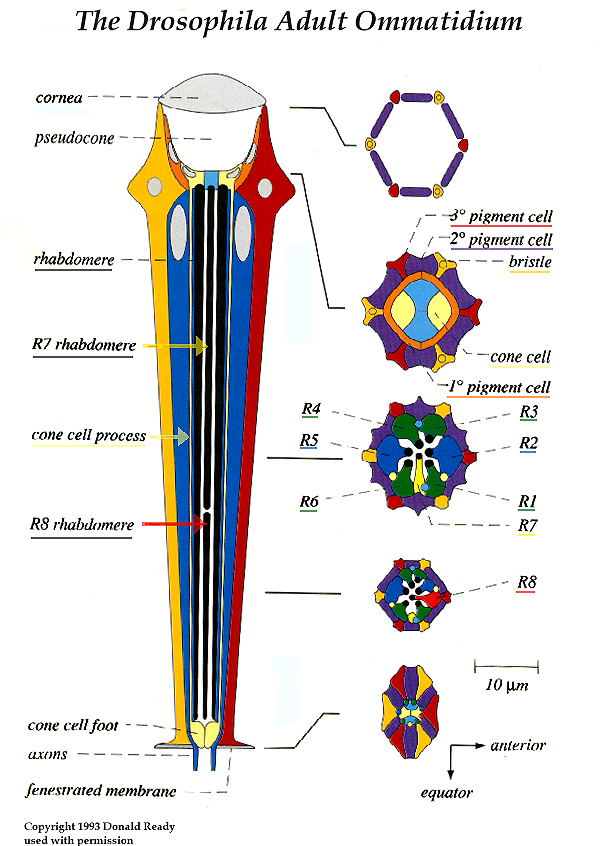
Wolff, T. and Ready, D. F. (1993). Pattern formation in the Drosophila retina. In: The Development of Drosophila melanogaster. Cold Spring Harbor Laboratory Press. Vol. 2 Pp. 1277-1325
|
To play the animation (below: 1940Kb), an exploded view of the figure on the left, you will need to have, or to install or upgrade (free) to Quicktime 4 for either Windows or Macintosh. You can also go directly to this site or copy/paste this URL into your Quicktime movie player:
http://www.sdbonline.org/fly/virtomm.mov
|
